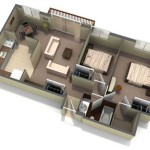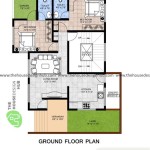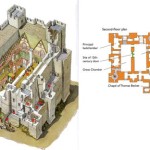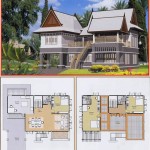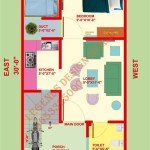Flat Roof House Plans and Designs: Essential Aspects
Flat roof houses are gaining popularity in contemporary architecture due to their clean lines, modern aesthetic, and several practical advantages. While flat roof construction differs from traditional pitched roofs, it offers unique design opportunities and requires careful planning to ensure functionality and longevity.
Advantages of Flat Roof House Plans
- Modern Aesthetic: Flat roofs impart a sleek, minimalist look that complements modern architectural styles.
- Usable Rooftop Space: Flat roofs can serve as outdoor living areas, terraces, or gardens, expanding the usable space of the home.
- Energy Efficiency: Flat roofs allow for the installation of solar panels and green roofs, improving energy efficiency.
- Cost-Effective Construction: Flat roofs typically require less complex framing and materials compared to pitched roofs.
Design Considerations for Flat Roofs
- Drainage: To prevent water pooling and leaks, flat roofs require a sloped surface to facilitate drainage. This can be achieved through strategic placement of scuppers or internal drains.
- Waterproofing: Flat roofs require meticulous waterproofing to prevent water penetration. Materials like EPDM rubber, modified bitumen, or TPO membranes are commonly used.
- Thermal Insulation: Flat roofs are susceptible to heat gain and loss. Proper insulation is crucial to maintain comfortable indoor temperatures and reduce energy costs.
- Walkability: If the roof will be used as a usable space, it must be designed to withstand foot traffic and provide adequate access.
Layout and Floor Plans for Flat Roof Houses
Flat roof house plans offer flexibility in layout and floor plan design. Common configurations include:
- Open-Plan Living: Flat roofs facilitate seamless transitions between indoor and outdoor spaces, creating open, flowing living areas.
- Mixed-Use Spaces: Flat roofs can accommodate versatile spaces, such as living areas that extend onto terraces or roof gardens.
- Vertical Expansion: Flat roofs can be used as a base for vertical extensions, adding additional stories or a rooftop penthouse.
Building Materials for Flat Roofs
The materials used for flat roofs play a vital role in durability and functionality. Common options include:
- EPDM Rubber: A synthetic rubber membrane known for its flexibility, longevity, and UV resistance.
- Modified Bitumen: A composite membrane that combines asphalt with polymers, offering excellent waterproofing and heat insulation.
- TPO Membranes: Thermoplastic polyolefin membranes are highly reflective and resistant to chemicals and weathering.
- Concrete: Concrete roofs offer durability and fire resistance but require meticulous waterproofing to prevent leaks.
Conclusion
Flat roof house plans offer a contemporary and functional alternative to traditional pitched roofs. By incorporating careful design considerations, selecting appropriate materials, and ensuring proper construction, flat roof houses can provide a unique and stylish living experience while maximizing space and energy efficiency.

House Plans 10 7x10 5 With 2 Bedrooms Flat Roof Samphoas Plan E1a Designs Construction

House Design Plans 5 5x6 With One Bedroom Flat Roof Home

10 Best Flat Roof House Designs In Kenya That Will Inspire You To Co Ke

House Design 7x10 With 3 Bedrooms Terrace Roof Flat Gable

3 Bedroom Flat Roof House Plan Muthurwa Com

3 Bed Cottage House Plan Flat Roof Palmer Construction Zimbabwe

Modern Unexpected Concrete Flat Roof House Plans Small Design Ideas L Shaped How To Plan

10 Best One Story House Plan With Flat Roof Design

Flat Roof House Design 3 Bedroom 19 2m X 16 1m Low Cost

23x20 Feet Small House Plans 7x6 Meter One Bedroom Flat Roof A4 Hard Copy

